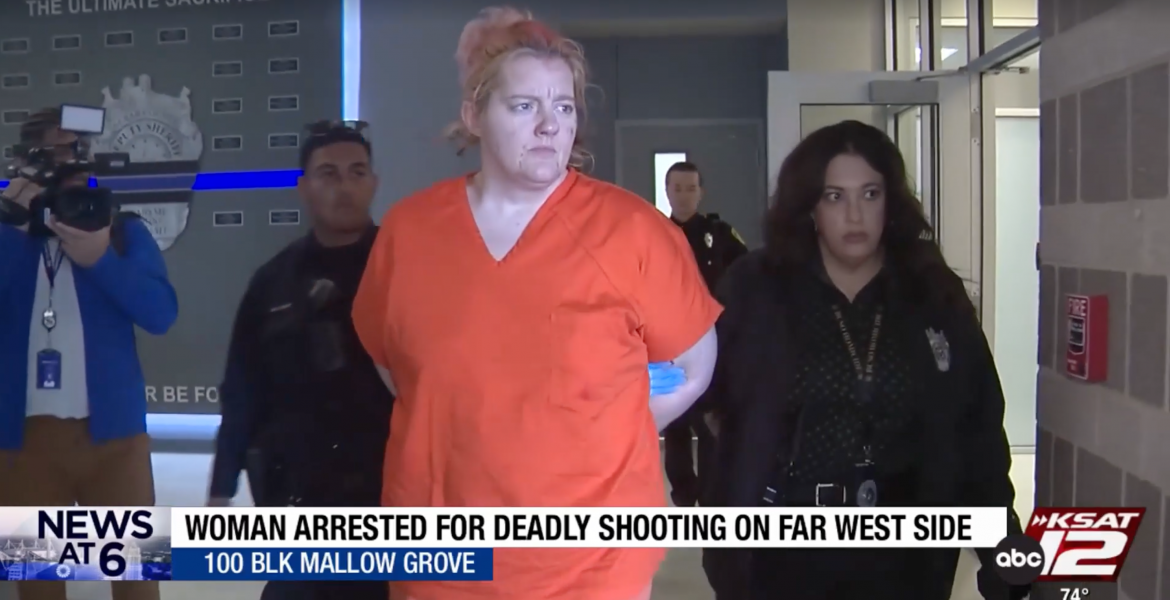SAN ANGELO, TX — Tuesday, the jury was seated and day two of Ray Zapata’s trial began with opening arguments at 9 a.m. in the 119th District Court in San Angelo. Zapata is charged with four felonies: Two counts of forgery of a financial instrument, theft of property greater than $200,000, and money laundering an amount between $20,000 and $100,000.
The charges are related to Zapata’s handling of the estate of John Sullivan, where he is is accused of forging Sullivan’s will.
Yesterday, Zapata pled “not guilty:” on all counts.

The prosecutor from the State Attorney General’s office is Shane Attaway. After the jury, plus two standby jurors, of 10 males and four females were seated, he made his opening statement.
The prosecution suggested Zapata teamed up with Sullivan’s criminal defense attorney John Young, to “steal $5 million together,” the approximate value of Sullivan’s estate.
Zapata wrote the will one or two days prior to Zapata finding Sullivan dead on June 4, 2014, Attaway said. For his services, the State suggested, $65,000 was funneled to Zapata by way of an intermediary attorney from Dallas named Juan Marquez.
The attorney representing Sullivan’s estate, Chris Hartman of Big Spring, was also paid with money funneled through Sullivan’s estate. Hartman, who the State states did not know Marquez, funneled the money to Marquez’s Dallas law office that eventually found its way inside a post office box in Christoval that Zapata rented.
Texas Ranger Nick Hanna detailed how his investigation traced the $65,000 of money from the Sullivan estate, through an Interest on Trust Accounts (IOTA) bank account to Zapata in Christoval. Once in possession of the money, Hanna said, Zapata had wrote one large check for $30,000 to a restaurant he had an interest in, and spent the rest of the money in a series of smaller checks. The trust account set up by Marquez was intended to mask a transfer of funds directly from Sullivan’s estate to Zapata. “There was never a direct flow of cash between Zapata and John Young,” Hanna said.

Above: John Young, along with Ray Zapata, has been accused of forgery, perjury and theft of a former client's estate. (Contributed Photo)
See: Attorney Ordered to Reveal What He Did With Sullivan's Money
The defense, led by Lubbock criminal defense attorney Mark Snodgrass, weaved a different tale than the State. He said Sullivan was thought of as a despicable man in San Angelo, and that Zapata’s co-defendant, John Young, was the only criminal defense attorney working in San Angelo who would represent Sullivan when we was accused of being a pedophile and child predator.
[[{"fid":"12597","view_mode":"preview","type":"media","attributes":{"alt":"Mejor Que Nada has been sold, but the move has put former owner Ray Zapata in some legal trouble with his bail bond business. (LIVE! Photo/Chelsea Reinhard)","title":"Mejor Que Nada has been sold, but the move has put former owner Ray Zapata in some legal trouble with his bail bond business. (LIVE! Photo/Chelsea Reinhard)","height":"675","width":"1200","class":"media-element file-preview"}}]]
Above: Mejor Que Nada has been since sold, but the move has put former owner Ray Zapata in some legal trouble with his bail bond business. This was possibly the restaurant Zapata put $30,000 of proceeds from the Sullivan estate into, according to Texas Ranger Hanna. (LIVE! Photo/Chelsea Reinhard)
Snodgrass said the district attorney desired to seize Sullivan’s money because the prosecutors would argue that money was obtained through illegal activity. Young worked hard to protect Sullivan’s money from forfeiture by placing it in a protected account.
Snodgrass said he would show that the prosecution does not know for sure if Zapata wrote the will. If the State cannot prove beyond a reasonable doubt that Zapata wrote the will, Snodgrass said that Zapata could not have been involved in theft or forgery.
Besides that, Snodgrass argued, the money paid to Zapata was only a little over 1 percent of the value of the estate. For that, it was not worth the risk.
Texas Ranger Nick Hanna, the lead investigator of the case against Zapata, was the first witness for the State.
Hanna said his initial thoughts were that because the date the will was signed was so close to the day Sullivan died, it seemed suspicious. “Zapata was the witness to a will of a person who died days afterward.” In addition, since the investigation revealed not only Young, but Zapata too, were beneficiaries of the will, it was a conflict of interest for the duo to testify in probate court that the will was authentic.
With that, the prosecutor displayed a large image of the will on a projector. Sullivan, Hanna contended, was an educated man. The will was chock-full of misspellings and grammar errors. “It says he was a poor Irish Catholic orphan…he wasn’t an orphan,” Hanna said.
Then the Texas Ranger stated their investigation revealed the will was written and dated a day prior to Sullivan’s death, on June 2. Hanna said the exact date of Sullivan’s death was June 3, not June 4 when the body was found by Zapata.
Zapata secured the will inside a bound and black Catholic missalette. The next time the will appeared was in probate court.
On the day Zapata discovered Sullivan dead, the first thing he did, according to the persecutor, was take a photo of the body (Sullivan was found nude) and texted it to co-defendant John Young.
After finding Sullivan dead, Hanna said Zapata called Young 22 times that day. Some of these answered calls lasted for ten minutes and some went to voicemail. Going through the transcript of him questioning Zapata in front of the grand jury, Hanna recalled where Zapata claimed that he could not recall how many calls he had made to Young because he was in shock after finding Sullivan’s body.
In the weeks following Sullivan’s death, no suspicion or law enforcement investigation into the Sullivan will and estate was ongoing. Zapata and Young were free to move quickly, making decisions as if Young were the estate’s de facto executor. He was, after all, named in the suspicious will as such.
Hanna described the speed in which Sullivan’s body was disposed, and how the decision to cremate Sullivan raised even more suspicions. Sullivan was a devout Catholic and cremation is not a Catholic tradition. In fact, the Catholic Church disallowed cremation until the early 1960s. Traditional Catholics viewed cremation as a reflection of doubt or disbelief about Catholic teachings on death, resurrection, and rebirth to eternal life.
The suspects said the body had to be cremated immediately because the body was rapidly deteriorating. Zapata and Young told Hanna it was an emergency, but Hanna could find no supporting evidence indicating there was an actual emergency.
With the body in ashes, Young and Zapata purchased the cheapest urn to hold Sullivan’s ashes, paying a mere $35. Furthermore, the incorrect birth date of Sullivan was printed on the urn, Hanna said.
With Hanna on the stand, the prosecution noted inconsistencies in Zapata’s statements in grand jury transcripts and with statements to investigators Zapata made in 2014. To the grand jury, Zapata said he saw Sullivan write something in the missalette. Sullivan told Zapata at the time that what he wrote was important, but Zapata insists that he didn’t read it. In another statement, Zapata was more detailed. He said he didn’t see Sullivan sign the will.
Zapata secured the black, bound missalette with the will inside, before police arrived at Sullivan’s home when Zapata reported him dead. He took it to his car, and eventually gave the will to Young.
After Hanna was finished, the State called Sullivan’s half sister, Louise Helen Kjellberg, to the stand.
She declared that Sullivan was an “old school” Catholic who would never have considered cremation for his funeral. She also mentioned her half-brother wrote in cursive and had a tendency to write parts of his letters in Latin. She said her half brother was “cheap.”
She gave an example.
She testified that after their mother’s funeral in 2000 she paid for it up front. Sullivan refused to pay his half of the funeral expenses. After that, she and her brother didn’t communicate again. She learned of his death months after his body was found in June 2014.
When looking at the will, she noted that it was written in print, not cursive, and said that Sullivan never wrote that way. Furthermore, the “I’s” were written in lowercase, another habit Sullivan didn’t have. The signing of his name was also different as the “s” looked more like and “f”, and not how she recalled her half-brother signing his letters.
“That’s not his signature at all,” she said.

Above: The will allegedly written by John Edward Sullivan on June 2, 2014. (Image/Court files)
See: Handwriting Samples: Who Wrote Sullivan's Will?
Attaway asked if she had any financial gain in the litigation of the will, especially considering she is a blood relative, and would have a right to Sullivan’s estate. She acknowledged that there wasn’t any money left because it had all been taken.
‘“I’m doing this for justice,” Kjellberg said. “For my brother.”
The prosecution continues its presentation of the complaint at 9 a.m. Wednesday.
Sonia Ramirez and Cameron Niblock contributed to this report
Subscribe to the LIVE! Daily
Required






Post a comment to this article here: